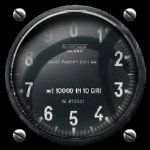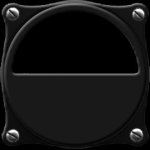kelticheart
Charter Member
Hi everybody!
There's a lot of work going on here on aircraft 2d panels, MVG and I are involved in some of it.
Yesterday he brought to my attention an historical fact that I want to share with everybody here, it's very interesting.
http://www.acontinuouslean.com/2013/04/05/a-better-way-to-screw/
Philips-head screws were not present on German and Italian aircraft of the 1930's. The blueprint shown in the link above indicates they were US-patented in 1936.
They were not seen in Europe before 1940 and, here, they were first seen on US-made vehicles and aircraft.
This makes instantly obsolete any 2d panel made for Luftwaffe or Regia Aeronautica birds, I believe even French or Russian airplanes, showing gauges installed with Philips-head screws. Regular slotted screws should be seen, instead.
Before yesterday, I would have never imagined it. It also goes to demonstrate what level of aviation history knowledge Manuele Villa, a.k.a. MVG, possesses.
This message has been brought to you by your average rivet counter, pain-in-the-butt known as:
kelticheart
Cheers!
There's a lot of work going on here on aircraft 2d panels, MVG and I are involved in some of it.
Yesterday he brought to my attention an historical fact that I want to share with everybody here, it's very interesting.
http://www.acontinuouslean.com/2013/04/05/a-better-way-to-screw/
Philips-head screws were not present on German and Italian aircraft of the 1930's. The blueprint shown in the link above indicates they were US-patented in 1936.
They were not seen in Europe before 1940 and, here, they were first seen on US-made vehicles and aircraft.
This makes instantly obsolete any 2d panel made for Luftwaffe or Regia Aeronautica birds, I believe even French or Russian airplanes, showing gauges installed with Philips-head screws. Regular slotted screws should be seen, instead.
Before yesterday, I would have never imagined it. It also goes to demonstrate what level of aviation history knowledge Manuele Villa, a.k.a. MVG, possesses.
This message has been brought to you by your average rivet counter, pain-in-the-butt known as:
kelticheart
Cheers!




